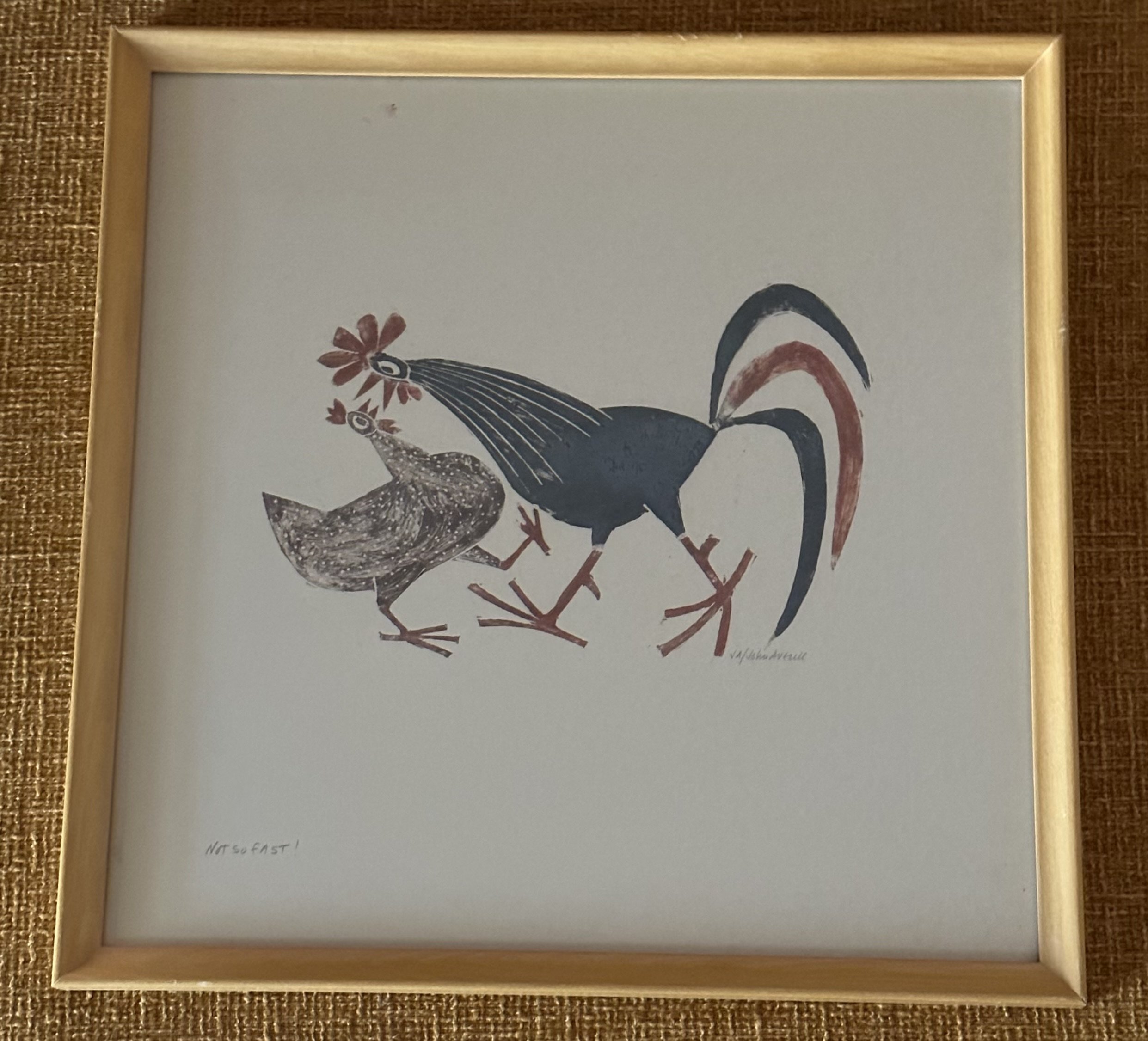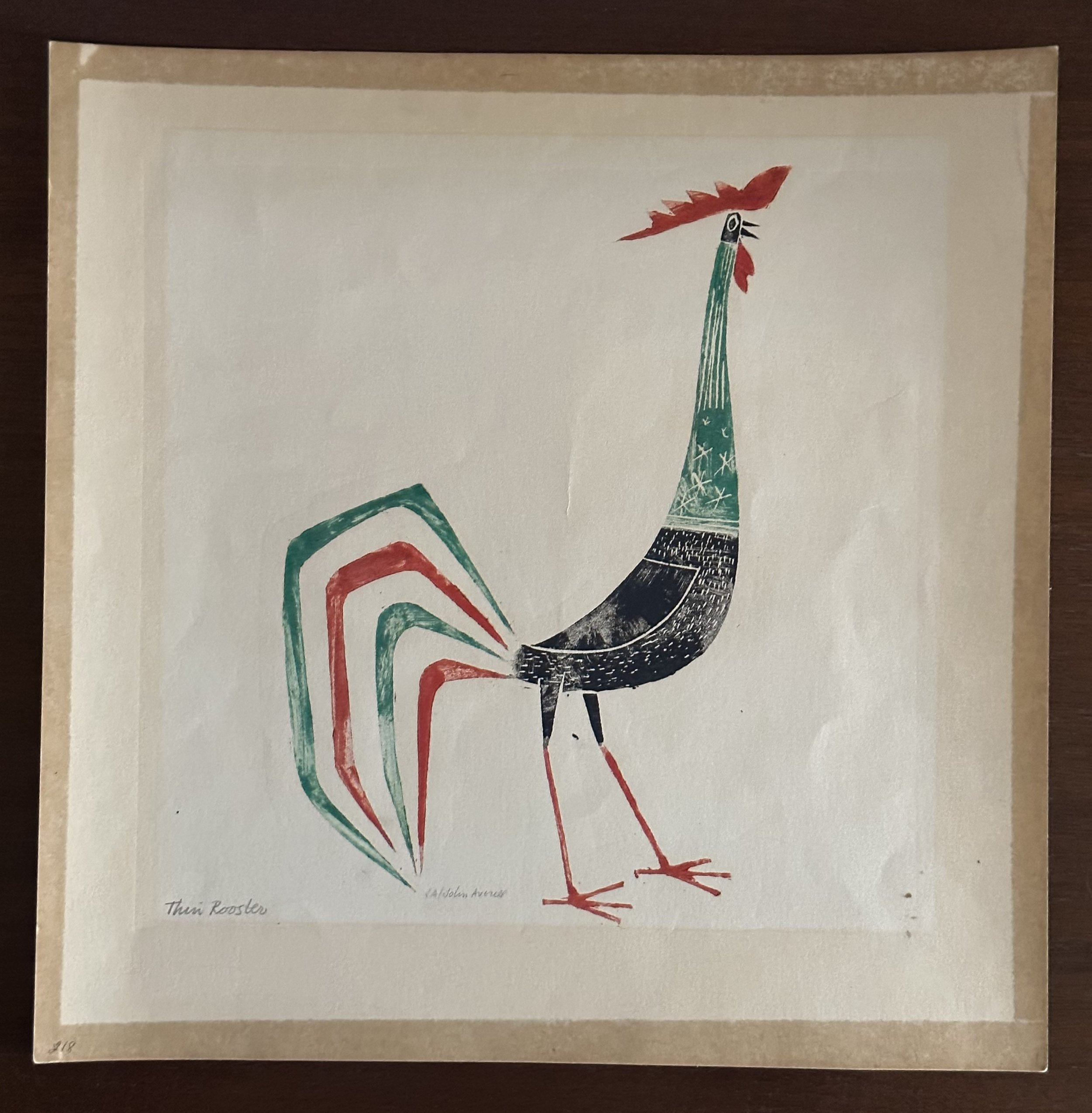John Emmett Averill
John Emmett Averill, (born 21 March 1900, Gayoso, Missouri, United States; died: 8 May 1960, Chicago, Illinois, United States), was the son of a small town newspaper editor, had printing ink thick in his veins. A leader in the school of sophisticated design-cartooning, he had also inherited that feeling of how drawings worked with type, especially Caslon. He eventually despaired of getting the 27 out on time, quit and devoted himself to The Molehill Press and his own publication, Seed Corn.
27 Chicago Designer founder 1936-1949
Aside from that, it appears he was much in demand for small space ads like the one below, where one would most often find the work of a cartoonist/illustrator. That's not to take anything away from Averill: his work was recognized by the Art Directors Club of New York on many occasions. He received three notations in the 1948 AD Annual alone.
"I am a free-lance commercial artist," Averill wrote in the December 1952 issue of American Artist. "One of the first things a free lance must learn is that he cannot sit in his studio and wait for clients to come to him. He learns that he has to do a lot of pavement pounding with his sample case."
"Not liking to pound pavements and spend long hours on hard benches in reception rooms, I sought an easier way to let art directors know my services were available. The easy way was obvious, a way that artists often recommend to their clients but seldom use themselves. It is to advertise."
When Fred Bouton, VP of Creative at JWT in Chicago wrote about a handful of Chicago's top talents in the November 1952 issue of Art Director & Studio News, he chose to placed John Averill alongside such legendary Chicago artists as Haddon Sundblom and Joyce Ballantyne.
Averill was surprised at how inexpensive a simple hand press was - at the time, less than fifty dollars. He had always been interested in printing, and was on a tight budget, so the press sounded like the perfect solution. Once the press arrived and Averill began printing his own work, he fell in love. "Often when playing in my pressroom," he wrote, "a feeling of sadness comes over me, a sadness for those lost years without a press and without the thrills of creative printing. Why didn't someone tell me about these small hand presses sooner?"
He wrote, "An advertising man told me that frequent mailings were more effective than an occasional elaborate one."
Some years later, a second article appeared in American Artist, with the editors commenting that they had received, "several hundred letters" after the initial article.
For the benefit of what was obviously a tremendous reader response, Averill explained how he produces multiple colour prints from a single linoleum block.
Most interesting though, is the concluding paragraph of the article where he wrote, "Each year I manage to sell several hundred of these amusing prints from several different designs, and I only wish that I had no commercial ( or economic ) obligations so I could devote myself to making them full time. In spite of its limitations, even the modest labors involved, I find producing these prints a fascinating occupation."
Chicago artist John Averill worked on a small hand press. Averill was a graphic artist, art director and illustrator who produced art and illustrations for ad campaigns, but well into his career, he fell in love with prints and printmaking. He was featured twice in The American Artist magazine during the 1950s and created quite a following with his whimsical animal block prints like The Rooster and The Gardener. "Often when playing in my pressroom," he wrote in the art magazine, "a feeling of sadness comes over me, a sadness for those lost years without a press and without the thrills of creative printing. Why didn't someone tell me about these small hand presses sooner?" Averill called his small printing operation the Molehill Press. In 1961 after his death, his wife and some of his friends produced a small book with many of his linocuts and newsletters. John Averill's Seed Corn is a nice collection of his work produced in his memory.
Chicago Tribune (Chicago, Illinois) 16 Nov 1952, Sun • Page 94




